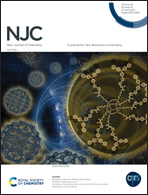Improved rotator cuff healing after surgical repair via suppression of reactive oxygen species by sustained release of Se†
Abstract
Oxidative stress is one of the critical factors that influence rotator cuff healing. Se has been proven to be effective for oxidative stress inhibition and inflammation control in previous studies. This makes it an ideal tool for improving rotator cuff healing. In this work, New Zealand white rabbit rotator cuff healing models were established, and sustained release of Se from porous Se@SiO2 nanocomposites was applied via intraarticular injection. Samples of tendon-bone junctions were removed for histological observation at the 4th and 8th weeks after the operation. The functional proteins collagen II and aggrecan and related inflammatory factors, such as TNF-α, IL-1β and IL-6, were evaluated separately by western blotting (WB) and ELISA. The results indicated that porous Se@SiO2 nanocomposites can significantly reduce scar hyperplasia and fat infiltration, optimize the structural remodelling of collagen fibres and cartilage cells, improve the expression of collagen II and aggrecan and reduce the expression of inflammatory factors. Porous Se@SiO2 nanocomposites showed effective results in promoting rotator cuff healing after surgical repair and had great potential in relevant clinical applications.



 Please wait while we load your content...
Please wait while we load your content...